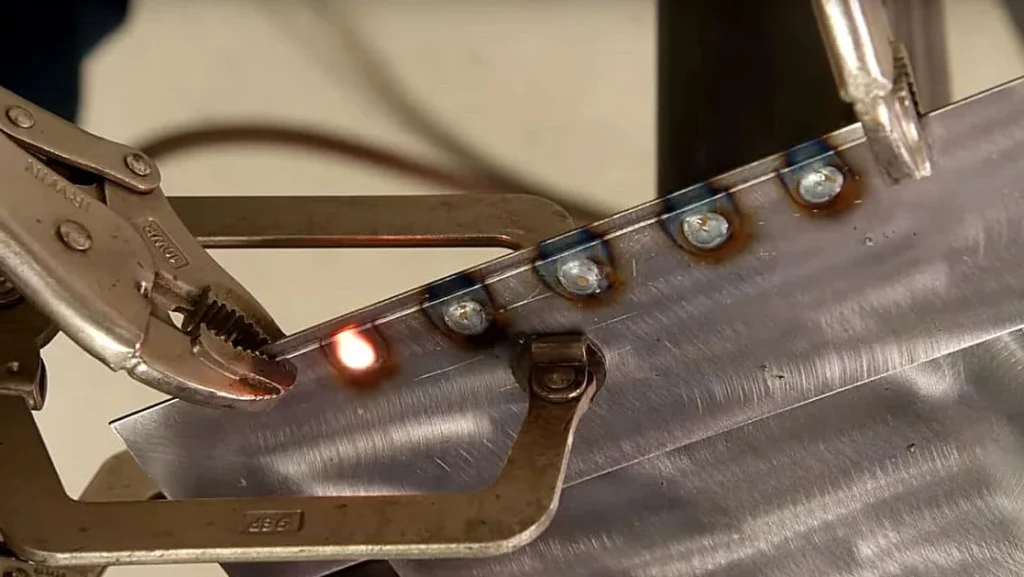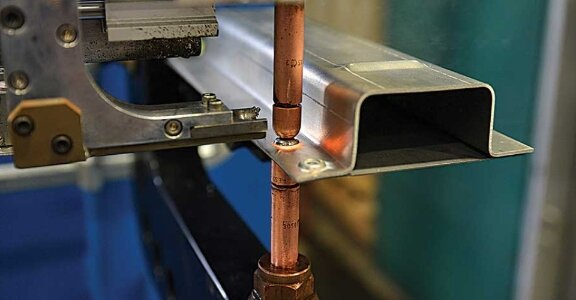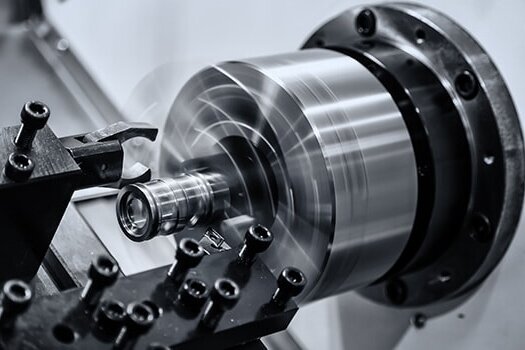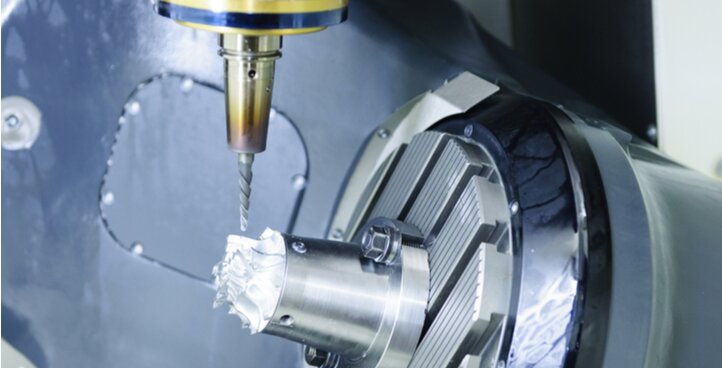If you’ve ever seen a welded enclosure warp or a bracket crack under stress, you already know—excellent spot welding doesn’t happen by chance. It comes from precision and control.
Spot welding is one of the fastest and most reliable methods for joining sheet metal in modern manufacturing. It’s used in electrical enclosures, chassis, cabinets, and automotive parts. However, achieving strong, repeatable, and clean welds requires more than just a machine and electrodes.
At Shengen, our engineers have spent over ten years perfecting the process for customers worldwide. Here are seven practical points that help ensure your next project meets both strength and appearance standards.

1. Material Selection and Compatibility
Good welding starts with the right material. スポット溶接 is most effective with mild steel, stainless steel, and aluminum. These metals conduct electricity well and can withstand high temperatures without cracking.
Low-carbon steel is the easiest to weld. It melts evenly and cools smoothly.
Coated surfaces, however, can cause trouble. Galvanized steel releases fumes and contaminates electrodes, while painted or powder-coated parts can block the current. Always apply coatings その後 welding whenever possible.
Aluminum requires a higher current—approximately three to four times more than mild steel—because it conducts heat more quickly. It can be welded well, but only with careful control of current, pressure, and time. Selecting the right alloy and adjusting the settings early saves time and money in the long run.
2. Sheet Thickness Range
The ideal thickness range for spot welding is 0.020″ to 0.090″ (0.5–2.3 mm). Within this range, you can get clean weld nuggets with little distortion. If the sheet is too thin, it can burn through. If it’s too thick, you’ll need much higher current and pressure, which lowers efficiency.
A good guideline is to keep a 3:1 thickness ratio between the top and bottom sheets. For example, welding 0.8 mm to 2.0 mm mild steel is acceptable, but welding 0.8 mm to 3.0 mm is better done with ティグ または ミグ溶接.
Always check that your total stack thickness stays within the machine’s limits, especially around corners, flanges, or folded edges.

3. Electrode Type and Maintenance
Even the best welding setup will fail if the electrodes are in poor condition. Most factories use copper-chromium-zirconium electrodes. These provide a good balance between strength and conductivity.
Over time, electrode tips can become flattened, oxidized, or accumulate residue. This causes uneven pressure and poor weld quality. It’s best to clean or replace electrodes every 500–1,000 welds. Smooth, well-shaped tips ensure stable current and reduce spatter.
Keep the cooling system in good working order as well. A water flow of approximately 4 L/min per electrode helps prevent overheating and maintains consistent welds during extended runs.
4. Welding Parameters: Time, Current, and Pressure
Spot welding depends on three main settings: current, pressure, and time.
Each one plays a role:
- 現在 generates the heat that melts the metal.
- プレッシャー keeps the sheets tight together.
- 時間 controls the size of the melted area (nugget).
For example, welding 1 mm mild steel may require a current of 8–10 kA, a pressure of 40 psi, and approximately 0.3 seconds of weld time. The exact settings depend on the material type, thickness, and appearance needs.
Modern machines can store preset “weld schedules.” At Shengen, we utilize innovative control systems that automatically adjust settings based on live resistance readings. This keeps every weld strong and consistent.
5. Heat Management and Cooling
Thin stainless steel or aluminum parts can easily warp or discolor when subjected to excessive heat. Managing heat is critical for both strength and looks.
Always use water-cooled electrodes for continuous welding. Keep coolant lines clean and check the flow at the start of each shift.
When welding large parts, change your sequence to spread heat evenly. Jump between opposite sides of the part instead of moving in one straight line.
For example, when welding a 1.2 mm stainless steel door panel, alternating welds left to right and waiting 2–3 seconds between welds can keep the surface flat and smooth.

6. Weld Placement and Joint Design
Where you place each weld matters. Maintain a minimum of 10 times the sheet thickness between spot welds. For a 1 mm panel, that means around 10 mm spacing. This prevents overlapping heat zones or warping.
Don’t put welds too close to edges, bends, or holes. Keep at least 2× the sheet thickness away from any edge to avoid burn-through.
Make sure the electrodes can reach both sides of the joint. If a フランジ or corner blocks access, adjust the design or add a slight relief to the area. At Shengen, we often review designs and suggest simple changes that improve strength and reduce rework costs.
7. Post-Welding Inspection and Quality Control
Checking the welds is the final step. A good spot weld should look smooth and round, without cracks or deep marks.
The nugget size should be approximately 4–6 times the sheet thickness—for a 1 mm sheet, that’s 4–6 mm.
Visual checks help identify issues such as spatter or weak welds. For more thorough testing, peel tests or chisel tests are used to confirm the strength. In high-volume production, ultrasonic or resistance monitoring systems can automatically detect defects.
At Shengen, we follow ISO 9001:2015 inspection standards. Every project includes parameter tracking and weld sampling to ensure consistency from batch to batch.
Design Considerations and Limitations
Spot welding has limits. It’s not watertight, so it shouldn’t be used for tanks or pressure parts. In such cases, seam welding or TIG welding is more effective.
Both electrodes must make contact with the joint, so they can’t reach inside enclosed areas or hidden flanges. Working with your fabricator early helps avoid these issues.
Surface quality also matters. Spot welding can produce a smooth Class A finish, but light marks may still be visible. If the part must look perfect, plan for light sanding or a surface coating later.
For automation, ensure the part’s design allows sufficient room for robotic arms and provides consistent electrode contact. Careful planning during design means fewer issues in production.
結論
Spot welding offers strong, fast, and cost-effective joints—if done correctly. By focusing on these seven key areas, you can minimize distortion, enhance consistency, and achieve welds that look and perform well.
The key takeaway is simple: plan for welding at the design stage. Doing this saves time, lowers costs, and ensures reliable results.
Do you need precise spot welding for your next project? Shengen’s engineering team provides expert sheet metal fabrication services, including advanced spot welding, laser cutting, and CNC bending. Upload your CAD file today for a free DFM review.
よくあるご質問
What is the strongest material for spot welding?
Mild steel is usually the strongest and most reliable material for spot welding. Its low carbon content helps heat spread evenly, creating solid weld nuggets. Stainless steel also works well, but needs tighter control of current and weld time.
Can spot welds be watertight?
No. Spot welds are not watertight since they create separate fusion points instead of a continuous seam. If a part needs to hold liquid or resist pressure—such as tanks or sealed housings—use seam welding or TIG welding instead.
How can I avoid warping during spot welding?
To reduce warping, manage both heat and weld order. Use water-cooled electrodes, allow 2–3 seconds of cooling between welds, and switch sides during welding to spread heat evenly. For thin materials under 1 mm, lower the current slightly and increase the pressure for better control. Always use firm, even clamping to keep the part flat during welding.
What are the common signs of a poor spot weld?
Bad welds often exhibit burn-through, deep dents, spatter, or dark marks around the weld area. A good weld nugget should look round, clean, and even in size. If the weld looks rough or sunken, the pressure or current may be set too high.
Is spot welding strong enough for high-strength sheet metal parts?
Yes, when done correctly. Spot welding offers strong shear and tensile strength, particularly in steel sheets within the 0.020″–0.090″ (0.5–2.3 mm) range. For extra strength, use multiple welds with proper spacing and good alignment.

ケビン・リー
レーザー切断、曲げ加工、溶接、表面処理技術を専門とし、板金加工において10年以上の実務経験があります。シェンゲンのテクニカルディレクターとして、複雑な製造上の課題を解決し、各プロジェクトにおける革新と品質の向上に尽力しています。




